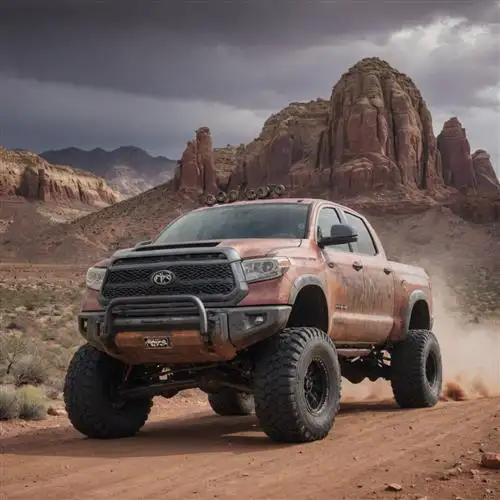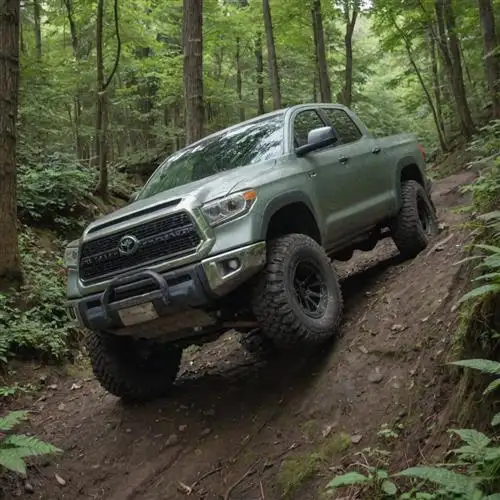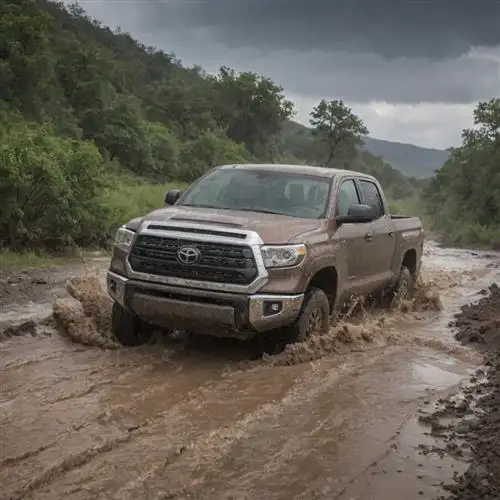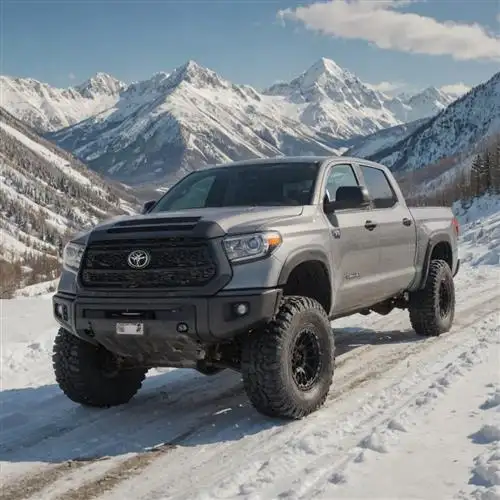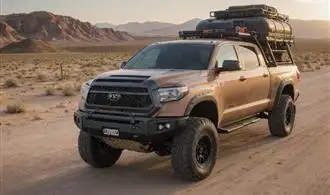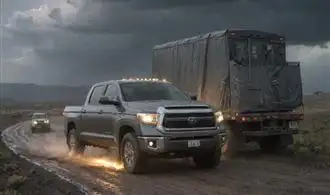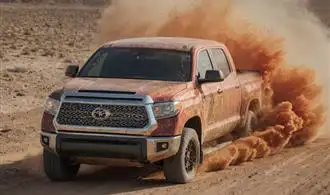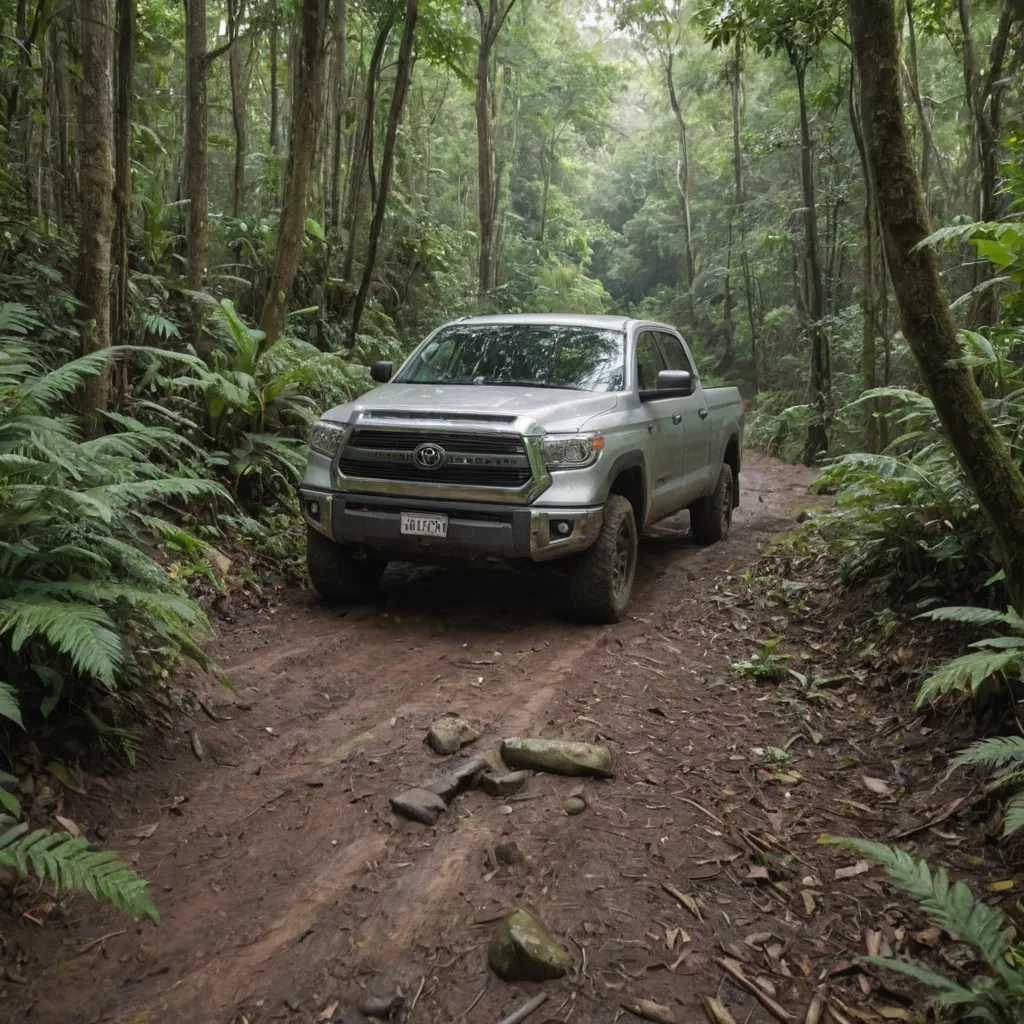
Upgrade Your Tundra for Optimal Off-Road Performance
Upgrading your Toyota Tundra for optimal off-road performance is a crucial step in conquering the toughest terrain. One of the most essential upgrades is the suspension system. Investing in a high-quality lift kit can significantly improve your Tundra's ground clearance, allowing you to navigate over obstacles with ease. Look for kits that offer adjustable settings, enabling you to fine-tune the ride height to suit your specific needs. Paired with heavy-duty shocks and coil springs, these suspension upgrades will provide a smoother and more stable ride, even on the roughest terrain.
Another essential upgrade is the tires. Equipping your Tundra with heavy-duty, all-terrain tires can make a world of difference when it comes to off-road performance. These tires are designed to provide exceptional traction on a variety of surfaces, from rocky slopes to muddy trails. Consider the tread pattern, sidewall strength, and load rating when selecting the perfect set of tires for your Tundra. Pair the new tires with a set of strong, durable wheels that can withstand the rigors of off-road driving.
To further enhance your Tundra's off-road capabilities, consider adding a skid plate or underbody protection system. These components shield the vital components of your vehicle, such as the oil pan, transmission, and transfer case, from damage caused by rocks, logs, and other obstacles. Look for skid plates made from heavy-duty materials like steel or aluminum, which can provide the necessary protection without adding excessive weight to your Tundra.
Depending on the type of terrain you plan to tackle, you may also want to consider upgrading your Tundra's drivetrain components. This can include upgrading the differential gears, installing a locking differential, or even adding a dual-range transfer case. These upgrades can significantly improve your Tundra's traction and control in challenging off-road conditions.
Conquer Steep Inclines and Challenging Obstacles
Conquering steep inclines and challenging obstacles in your Toyota Tundra requires a combination of proper technique, vehicle preparation, and a keen understanding of off-road driving dynamics. One of the key factors in tackling steep inclines is maintaining momentum. Approach the incline at a steady, controlled speed, avoiding sudden acceleration or braking, which can cause your wheels to lose traction. Maintain a consistent throttle input, allowing the vehicle's torque to propel you up the hill. If your Tundra is equipped with four-wheel drive, engage the system to maximize grip and stability.
Another essential consideration is weight distribution. Shift your weight forward by having passengers or cargo positioned towards the front of the vehicle. This helps the front wheels maintain better traction and prevents the rear wheels from spinning. Additionally, engage the low-range gearing on your Tundra's four-wheel drive system to provide the necessary torque and control when navigating steep ascents.
Navigating challenging obstacles, such as large rocks, deep ruts, or uneven terrain, requires a careful approach and a keen eye for spotting potential hazards. Slow down and visually survey the obstacle before attempting to traverse it. Choose the line of attack that offers the best clearance and traction, and be prepared to make adjustments mid-crossing if necessary. Utilize your Tundra's suspension capabilities, such as the available Bilstein shocks or TRD off-road package, to smoothly navigate over and through obstacles.
It's also important to be mindful of your Tundra's approach, departure, and breakover angles, as these will determine the vehicle's ability to clear obstacles without scraping or becoming stuck. Consider installing aftermarket accessories, such as skid plates, rock sliders, and a lifted suspension, to enhance your Tundra's off-road capabilities and protection.
When faced with extremely challenging terrain, engaging your Tundra's electronic stability control and traction control systems can provide an added layer of safety and control. These features can help prevent wheel spin and maintain stability, even in the most demanding off-road conditions.
Navigating Treacherous Terrain with Confidence
Conquering the most challenging off-road conditions requires a combination of vehicle capability, driver skill, and a deep understanding of the terrain. The Toyota Tundra, renowned for its impressive performance and robust engineering, is a formidable companion when it comes to tackling the toughest terrain. By harnessing the Tundra's advanced features and leveraging your own driving expertise, you can traverse even the most treacherous landscapes with confidence.
One of the key advantages of the Toyota Tundra is its advanced four-wheel-drive system. Equipped with robust transfer cases, locking differentials, and advanced traction control systems, the Tundra is designed to maintain grip and control even in the most demanding off-road conditions. Whether navigating steep inclines, traversing deep mud, or powering through rocky obstacles, the Tundra's four-wheel-drive capabilities ensure you can tackle the terrain with ease.
Another critical factor in navigating treacherous terrain is the ability to read the landscape and anticipate potential challenges. Experienced off-road enthusiasts know that careful observation and planning are essential for a successful journey. By studying the terrain ahead, you can identify potential hazards, choose the optimal line of approach, and adjust your driving style accordingly. This level of situational awareness can mean the difference between a smooth, confident traverse and a potentially hazardous encounter.
Proper vehicle setup and maintenance are also vital when conquering tough terrain. Ensuring your Tundra is equipped with the right tires, suspension components, and recovery gear can significantly enhance its off-road capabilities. Things Toyota Tundra Owners Wish They Knew can provide valuable insights into optimizing your vehicle for the demands of off-road adventures.
Finally, developing your own driving skills and techniques is crucial for navigating treacherous terrain. Mastering techniques such as wheel placement, throttle control, and proper use of the four-wheel-drive system can help you maintain control and confidence in even the most challenging situations. Investing time in off-road training and practicing in controlled environments can help you hone your skills and prepare for the unexpected.
Enhancing Your Tundra's Off-Road Capabilities
The Toyota Tundra is renowned for its exceptional off-road capabilities, making it a popular choice for adventurous drivers who seek to conquer the most challenging terrains. To unleash the full potential of your Tundra, it's essential to consider various upgrades and modifications that can elevate its off-road performance. One of the crucial aspects to address is the suspension system, which plays a pivotal role in providing a smooth and stable ride, even on the most uneven surfaces.
Upgrading your Tundra's suspension with lifted kits or aftermarket shocks and struts can significantly improve its off-road prowess. These modifications not only enhance the vehicle's ground clearance but also allow for the installation of larger, more rugged tires. Larger tires, in turn, offer improved traction, better obstacle-climbing ability, and enhanced stability on steep inclines or uneven terrain.
In addition to suspension upgrades, equipping your Tundra with a robust skid plate system can protect your vehicle's underbody from potential damage caused by rocks, debris, or other obstacles encountered during off-road adventures. These skid plates act as a shield, safeguarding vital components such as the oil pan, transmission, and transfer case from impacts and abrasions.
Another essential component to consider is the tires. Investing in high-quality off-road tires specifically designed for the Tundra can make a notable difference in your vehicle's capabilities. These tires feature deeper treads, more aggressive sidewall design, and enhanced puncture resistance, allowing you to navigate through mud, sand, or rocky terrain with confidence.
To further enhance your Tundra's off-road abilities, you may also want to consider installing auxiliary lighting, such as LED light bars or fog lights. These additional lights can significantly improve visibility and illumination, making it easier to navigate through low-light conditions or during nighttime off-road excursions.
Lastly, don't forget to equip your Tundra with the necessary recovery gear, including tow straps, shackles, and a reliable winch. These essential tools can prove invaluable in the event of getting stuck or needing to assist others during your off-road adventures.
Mastering the Art of Off-Road Driving Techniques
Conquering the toughest terrain in your Toyota Tundra requires a deep understanding of advanced off-road driving techniques. These techniques go beyond the basics and enable you to navigate challenging environments with precision, control, and confidence.
One of the fundamental skills to master is vehicle momentum management. Off-road driving often involves navigating over uneven surfaces, loose gravel, or steep inclines. Maintaining the right momentum is crucial to avoiding getting stuck or losing control. Learn to read the terrain, anticipate changes, and adjust your throttle and gear selection accordingly.
Articulation and wheel placement are also critical. Your Tundra's impressive ground clearance and four-wheel-drive capabilities allow you to tackle obstacles that would stall a standard vehicle. However, properly positioning your wheels and managing the articulation of your suspension are key to conquering these challenges. Develop an eye for identifying the best path and the ability to precisely maneuver your vehicle.
Traction control and differential lock systems are powerful tools in the off-road driver's arsenal. Understand how to utilize these features to maximize grip and prevent wheel spin, especially in situations where one or more wheels lose contact with the ground. Mastering the proper application of these systems can mean the difference between progressing through a challenging section or becoming hopelessly stuck.

